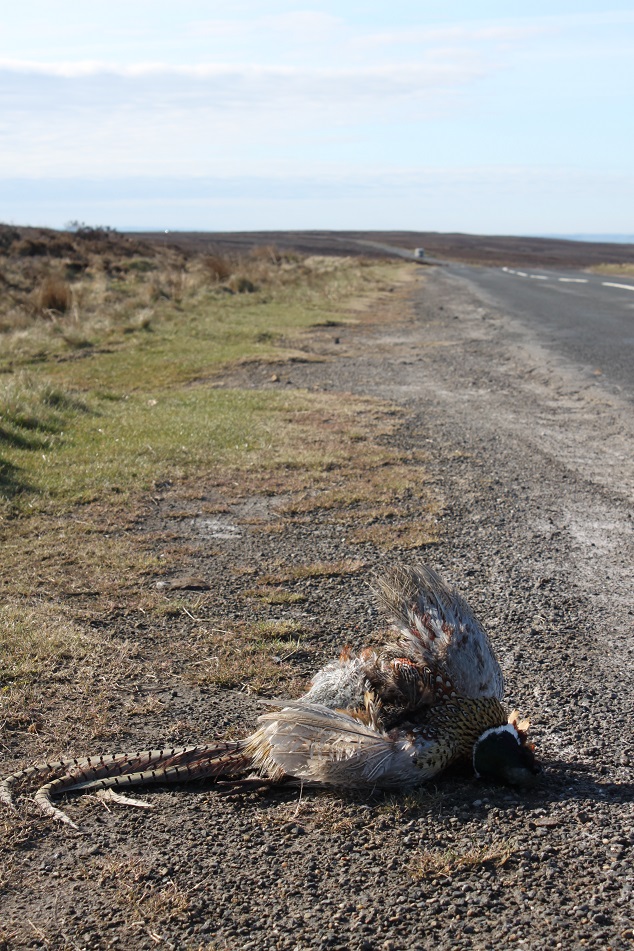
There is a narrative developed by DEFRA and Natural England that the Madden and Sage review, and the bits that they didn’t look at, all combine to mean that any impacts of gamebird releases are limited to, and are known to be limited to, 500m from release sites. This is not true.
It’s not true because the ones we know about are not limited to 500m, and the ones we know less about cannot be assumed to be limited to 500m.
This was not something that would have been possible to resolve during the final days of the successful Wild Justice legal challenge, nor is it the type of thing that the court would have ruled upon if we had insisted on going to court (the legal profession doesn’t like having to think about the real world of science and can’t really cope with it (though they might put that differently)). So, just as BASC and others will argue (though good luck to them in finding some science on this subject) that they know and can prove that the impacts are restricted to 500m, Wild Justice and many others will be making the case, on the science, that 500m will not meet DEFRA’s need to satisfy the requirements of the Habitats Directive. And I’ll be doing that in a few further blogs here.
But just take a look at the dead Pheasant at the top of this post. It’s on a grouse moor in the North York Moors and was taken in 2016 when Ruth Tingay and I travelled around the country with a six-foot Hen Harrier. As you can see, it seems to have wandered quite a long way from any release pen (and who knows which direction it came from, how long it had been present and what scavenger would have eaten it and then gone on to gobble up some Curlew eggs or chicks?).
Pheasants get everywhere. They are almost everywhere, and so their impacts are everywhere. 500m will not be too much, it isn’t spot on, it is too little and there will be ways in which you the public can help make this point in the future.
More later…
[registration_form]
Perhaps the 11 (at time of writing) dislikers can provide some evidence that all Pheasants remain within 500m of their release sites? Or is it that they just have a problem with basic truth?
I suspect that they wouldn’t know the truth if they fell over it on their way to a shoot..
And (predictably) answer came there none.
A problem with basic truth it is.
My own view is that if the buffer zone around Bird Flu premises is 10km. This might of course be a gamebird rearing facility and no shooting or releases can take place within that cordon during the outbreak, then surely the assumption is Pheasants may be able to disperse that far and that should be the distance around important wildlife sites without any releases.
I can barely begin to think about the reaction if a 10km zone around SAC/SPAs was proposed!
I agree Tim but if we want those places to be ( vermin) sorry, Pheasant free we need to be sure it is so. The partridge pens are 2-3 km away yet they still turn up regularly in both our garden and the adjacent NR. I’d much prefer the Dutch route, ban all releases but not the shooting of them.
The location of the release pen is just the beginning. It is the strategic positioning of the network of feeders and the efforts made to feed them in or out of the different woods that will suit the drives, that determines where most of them go in subsequent weeks. With planning, they can be fed into (and starved out of) woods that are a long distance apart, to get them where they need to be on the morning of the shoot. And naturally some just randomly wander off for miles anyway. In addition to release pens, are feeders and is feeding to be banned in the woods that fall within the SSSI’s as well? This seems vital to me.
maybe just maybe that pheasnt was a wild bird and had never seen an incubator or a release pen? Lots of ground nesting birds are very successful in rearing young on grouse moors. Do not assume every pheasant, or RL partridge for that matter, is artificially reared.
Richard B – it’s a non-native species. What you call ‘wild’ means that it has survived one or more shooting seasons or its parents did so it’s as wild as a Grey Squirrel, with which it will soon be sharing Schedule 9 of the Wildlife and Countryside Act. And this bird may be thriving on a grouse moor because it is hoovering up all the Adders and Common Lizards on the place (well, the ones that weren’t incinerated by heather burning back in the spring).